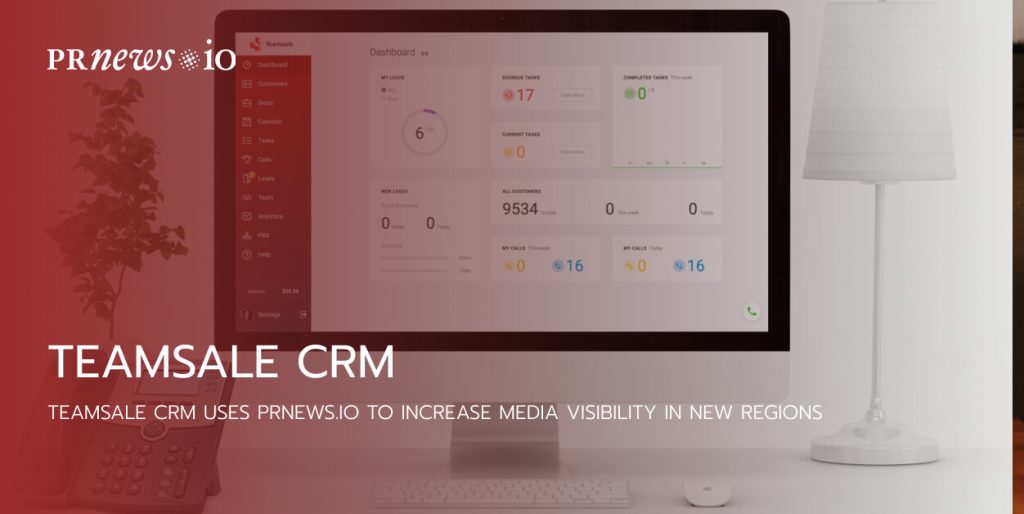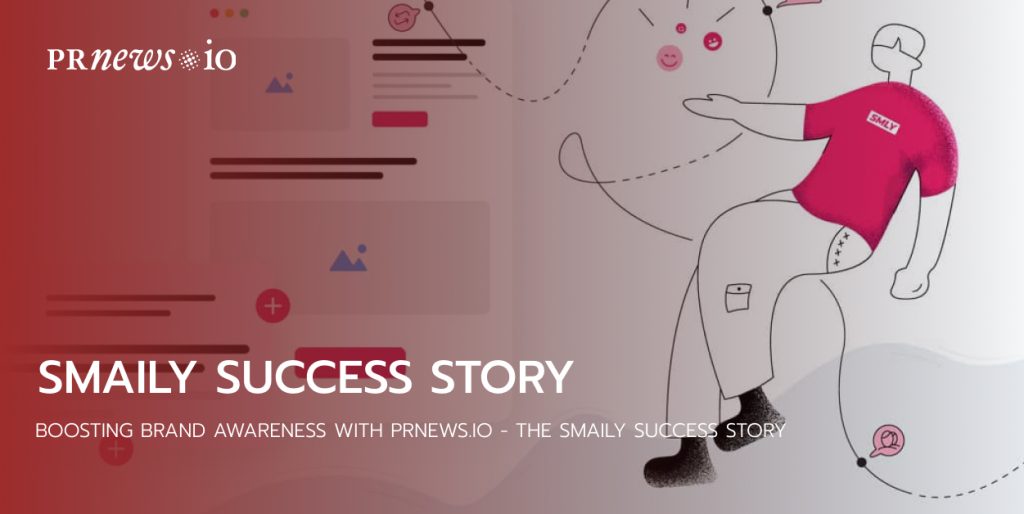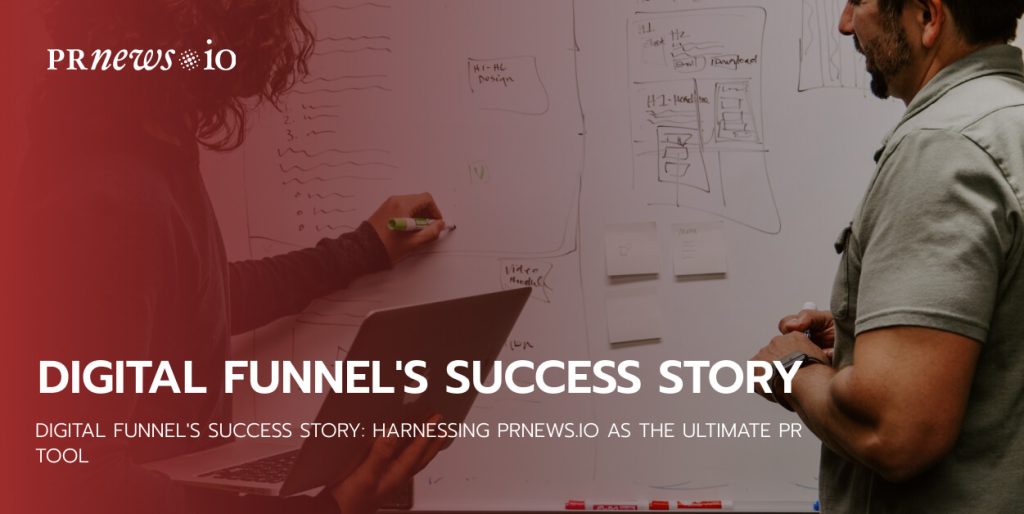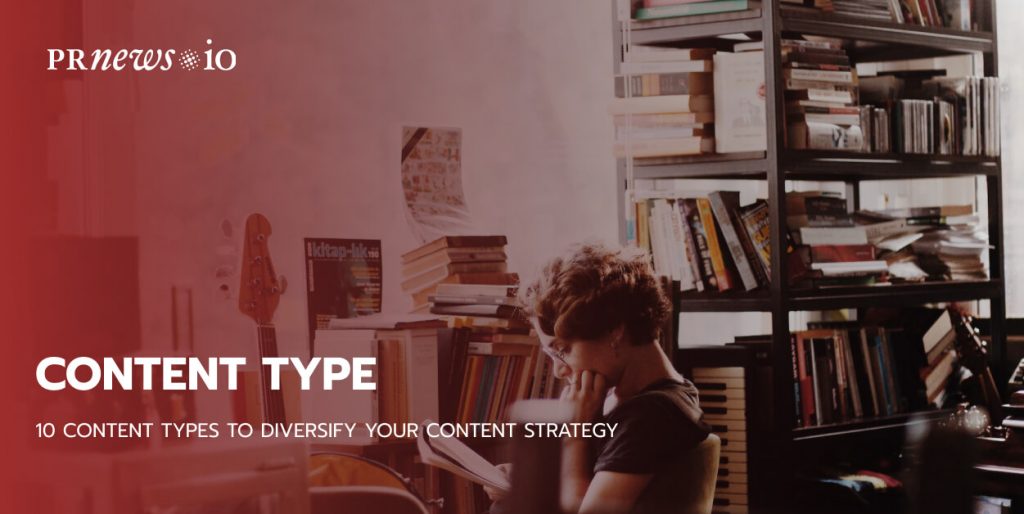
Content is everything, especially when building a diversified content marketing strategy. It is what communicates your company’s objectives and selling points, and it is what sets you apart from your competitors. By selecting the appropriate content type, your company can drive relevant online traffic and convert leads.Statistics show that 92% of marketers consider content a highly effective business asset. The question is, which types of content are most effective for your business? Should you focus on using only one content type or use different forms of content in your content marketing strategy?
Let’s discuss different forms of content you can use in content marketing and the value of using varying content types to nurture visitors into customers.
The Most Common Content Types List
There are more than 100 different types of content available, which is more than enough for marketers looking forward to choosing the best form of content to succeed in content marketing. Although all of them seem different, all types of content have something in common: they serve the purpose of your organization, follow a particular structure, and are widely accepted in the community that consumes them. Some of the most common content types include landing pages, infographics, podcasts, tutorials, polls, and many other forms of content organization that can help your company reach its objectives.
Let’s consider the following list of the most common content types we will discuss in this article:
- Blog posts
- Case studies
- Emails
- Ebooks
- Guides
- Press releases
- Social media content
- Video content
- Webinars
- White papers
A blog post is one of the most popular content types marketers use in different business niches.
- A blog post is a type of content that companies publish on their blogs or other partners’ websites. Such content has a main topic that’s discussed in the blog post and the objectives it should achieve.
- Writing blog posts has different purposes: purely informative, educational, promotional, etc.
- A blog post should be optimized for SEO to be more findable by the target audience and to make the resource where it’s published more discoverable in search engines.
Whatever content type you decide to use in your marketing strategy, all forms of content have three major characteristics:
- Purpose. Different content types serve different purposes. For example, a blog post aims to inform, educate, and entertain.
- Structure. Each content type has its own structure that’s generally accepted in the industry. Besides, companies can reuse aspects and attributes of the content structure in new ways. Thus, the audience has an idea of what to expect from a specific form of content.
- Acceptance. Companies can build communities with the help of content.
Content Marketing Platform
- 100,000+ media publications;
- get backlinks to your product;
- scale work with content distribution.
Benefits of Using Different Content Types
Incorporating various content types into your content marketing strategy has many advantages. Let’s consider the most significant advantages.
- Content creation gets much easier and faster when you have different reusable content structures and repeatable processes that provide for faster and easier scaling. For example, if you have a template you use for writing case studies, which your team often reuses, you can easily delegate this work without worrying about the quality of the content.
- Embracing different content types allows you to reach out to a wider audience. Not all people can be reached through the same channels. Some users are heavy users of social media.If you focus all your effort on writing social media content, you will likely miss the opportunity to create different forms of content.
- Using different content types allows you to improve your content marketing strategies by learning how different users react to what you share. It allows you to learn the preferences and behaviors of your audience and focus on writing the types of content that appeal to them the most.
How to Use Different Content Types
Now let’s see how you can use different content types to diversify your content marketing strategy and increase brand awareness.
Blog posts
It’s one of the most common content types used by brands worldwide. By consistently publishing high-quality blog posts, a company can attract more traffic, position itself as an authority, and nurture site visitors. Creating blog posts means you should have a strong SEO strategy in hand:
- selecting relevant keywords that will assist you in driving more traffic from search engines;
- developing strong internal links stricture to keep visitors on your website for longer, which should increase the chances of turning them into good leads;
- building backlinks to drive more traffic and boost the company’s authority.
How to prepare?
If approaching the question simply, the article is written as follows:
- presentation of the main thesis (description of the problem);
- the system of arguments proving or refuting the thesis;
- findings.
The most important things in the article are its informational content and benefits for the reader. The content of the article should include specific facts, their analysis, and conclusions based on these data.
If other informational materials must be neutral and objective, this article may express the personal position of the author. The rule of a good tone, in this case, is considered the separation of facts and opinions, as well as an indication of authorship.
Important nuance: one article, one topic. If the topic is too extensive, the material is better divided into several articles.
The article is pretty big material. The volume of this text starts with 5000 characters and can reach the size of long-read, several dozens of thousands of characters.
A popular type of article is a case study. They also have some features.
- Evergreen Content Ideas for Your Business: Use Blogs Effectively in PR
- What is Sponsored Content? Everything You Need To Know
- TOFU, MOFU, and BOFU Stages for Your Content Marketing Funnel
Case studies
A “case” is a practical example of the actions you implement to achieve certain goals. By posting case studies, like user testimonials, your company can gain the trust of future customers. It’s not a secret that people trust the words of fellow customers more than the most professionally written marketing text.
Case studies allow your prospective customers to find out how your company has helped them reach their goals, what features of your products or services appeal to them the most, etc. Case studies are specific to your company. This type of content should be tailored for your potential buyers in the mid- to bottom-of-the-funnel stage.
What is the point of use?
Cases help to increase the credibility of the company and demonstrate its experience and capabilities. This is a way to both boast of your achievements and gain a reputation as an expert.
Cases cannot only discuss successes, but also failures. In such cases, the fact of failure is not important after all, it’s all about how to face it, how you react to it, and what conclusions you draw.
How to prepare?
This type of article must include:
- The task conditions are the pursued goal.
- performed actions;
- results;
- findings
Conclusions—the most important part of the case, regardless of the achievement of the goal.
Emails
Email is another content type that should help marketers earn outstanding returns. With the help of email, you can:
- Build better communication with your active subscribers;
- Create newsletter campaigns to share your latest news and updates with your subscribers;
- Share webinars and other middle-of-the-funnel content with your audience;
- Convert prospects into customers by sending targeted email campaigns.
eBooks
You can position your brand as a trustworthy authority within your industry using eBooks. This type of content should help you nurture leads and give your audience more valuable insights about your business niche. Creating this form of content should work for your company if:
- The content you create should be shorter, and you should look for ways to organize your ideas in a more user-friendly way.
- You want to share original research in exchange for a user’s email address or payment.
Read more:
Guides
Guides are informative, long-form blog posts, landing at an average of 1400 words. This content type has become increasingly popular over the past years. According to OrbitMedia’s research, longer posts drive better results.
While working on guides, create in-depth pillars highlighting your company’s main focus areas. At the same time, while working on your copy, link content to relevant subtopics, making your content more informative and valuable for your readers.
Press releases
Creating press releases is a good way to inform the media and general public about your company-related news, releases, upcoming events, promo deals, etc. Press releases allow you to generate buzz around your organization and increase brand awareness through word-of-mouth.
Consider the following simple tips when working on press releases:
- Discuss topics that are relevant to your audience;
- Cover who you are, when, how, where, and what you offer in whatever update you are sharing.
- Give your readers thought-provoking quotes o other information worth talking about.
What are the features?
The defining factor for the effectiveness of the press release—informational content
The news break always talks about events. If there is no event, create it to be able to write about it. Yes, it works.
The press release should be important to the audience of the selected edition. The wider the circle of people who are potentially interested in this topic, the better. No interest means no readers, which, therefore, means no sales.
The press release should also be actual: if the event happened two months ago, the info guide is hopelessly “rotten.” Alas.
The press release has a standard structure:
The ideal text length is 2,400-2,560 characters. The perfect press release falls on page 1—in case they need to print it.
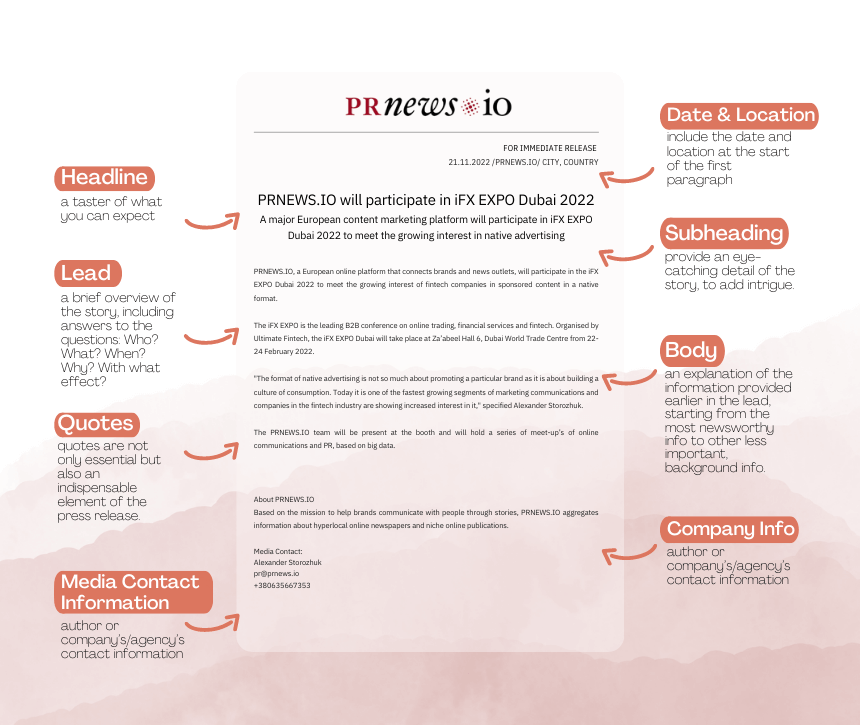
What is the point of using it?
For interactions with editors and the general public. It should be informed about current events, changes in the company and emergence of new products. It is an important tool for creating a positive information background around the brand
How to prepare?
By the principle of an inverted pyramid, the most important thing is in the title, a little more detail is in the liner, and all details are revealed in the main part.
Reporting specific facts is a must, not using meaningless and ruthless patterns for symbols. The text is dominated by active verbs, and a needed action subject, for example: “The factory launched a new shop.” There are no calls to action or advertisements that can be opened.
The date of events and contacts to communicate with the company are required if journalists want to attend an event or write an article based on a press release.
Social media content
Research shows that 59% of the world’s population uses social media. You must take advantage of every opportunity to reach out to your target audience through social media platforms because most users can be found on Facebook, Instagram, LinkedIn, and other platforms. To build the most effective social media marketing campaign, figure out what social media platforms your customers mostly use and the best schedule you should follow to drive maximum user engagement. When posting social media content, ensure that you add links that drive your content marketing goal.
Video content
92% of marketers believe video content is essential to their content marketing strategy. Video content can be used across different platforms and media channels. You can add videos to blog posts, case studies, guides, press releases, etc. This content type has many purposes, including educational, entertaining, and promotional. Marketers agree that video content has a good return on investment, driving such positive results as increased sales and leads.
Webinars
Webinars and video content go hand in hand. Both types of content are tailored to appeal to the users in the later stages of content marketing funnels and aim to drive more conversions. For example, companies can run webinars to give users tips on how to use a specific product or service, how to benefit from it, and how to invite people to try it.
White papers
White papers are informative reports intended to help your company showcase its original research on the topic and establish your brand as a thought leader in your industry. An excellent white paper should provide in-depth information and expert research and create value on top of the already-published public information.
Diversify your digital marketing strategy with various content types.
Different users look for varying content types on different platforms and media resources. Using different content types lets companies better manage their communication with the audience. By sharing varying content types, you give your customers the freedom to choose the content that appeals to their needs and use the media resources they find the most usable, fun, or convenient.
Conclusion
For different purposes, use different types of content
- There was an event that will interest thematic media—issue a press release.
- Informational guides glow, and the event is interesting to the general public—publish the news.
- It is necessary to confirm the status of an expert in the market and increase the credibility of the company—write an analytical article.
- I want to boast about achievements and draw conclusions after failure—prepare the case.
- Public relations are needed—conduct an interview.
- Promote a new product—make an overview.
The PRNEWS.IO team will help prepare these materials and distribute them around the world.

